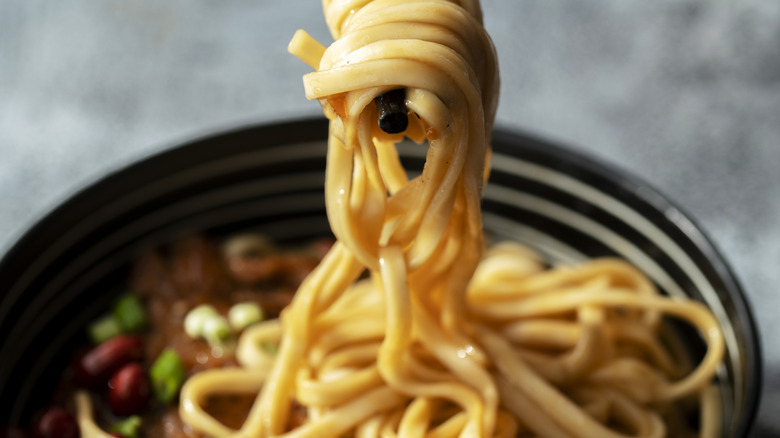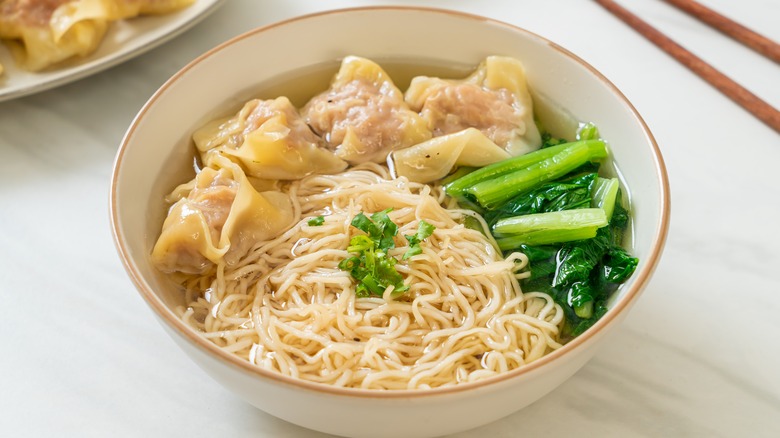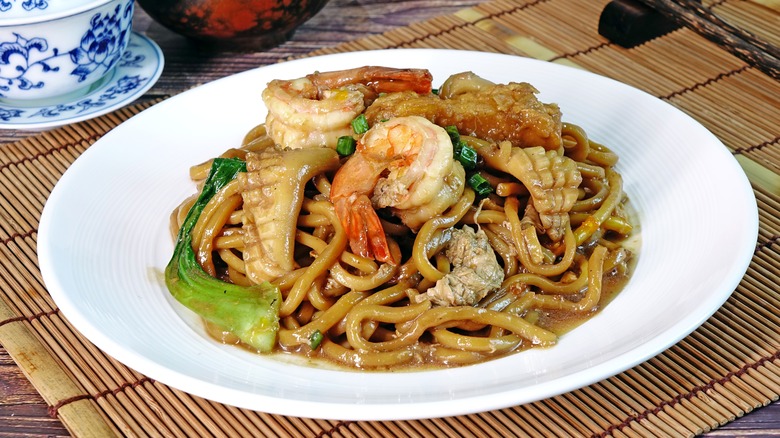What Makes Chinese Egg Noodles Unique?
Chinese egg noodles are a key ingredient in vegetable chow mein, shrimp or pork lo mein, beef brisket noodle soup, and other Asian dishes. What sets them apart is their vibrant yellow color and springy, chewy consistency. The addition of eggs gives them a subtle, rich flavor, while the wheat flour imparts a nutty aroma. However, their texture and other characteristics depend on the ingredients used. For example, some types of noodles have a neutral taste but will absorb the flavors of the sauces and broths they're served with.
Regular egg noodles are made with flour, salt, and eggs. Chinese egg noodles may contain the same ingredients but can be prepared in different ways, depending on how you plan to use them. For example, you can deep-fry them in oil for a crispy consistency and then serve them with chicken, beef, seafood, or veggies. Plus, you can cut them thinner or thicker to make wonton noodles, chow mein noodles, or other noodle varieties.
Chinese egg noodles come in all shapes and sizes
Chinese noodles have a rich history that dates back more than 4,000 years. Not only are they a staple of the Chinese diet, but they're also associated with longevity. Although they fall into the same category as bread and pasta, those containing eggs boast high amounts of protein, vitamin D, and vitamin E. On top of that, they come in thousands of varieties, depending on their composition, shape, and preparation method.
With their chewy texture, egg noodles are typically used in soups and stir-fry dishes. They can be thin or thick, flat or round, and have a richer flavor than wheat noodles. For example, Hong Kong egg noodles are very thin, with a slightly sweet flavor and silky texture. They're usually boiled for one or two minutes and then stir-fried along with other ingredients, such as shrimp, onions, chives, and beans. Once cooked, they have a smoky flavor and crispy texture that leave you craving more.
By comparison, wonton noodles are thicker and wider, but you can cut them thinner if desired. Some varieties may contain tapioca starch, which contributes to their chewy consistency. Mak An Kee, a popular wonton noodle restaurant in Hong Kong, makes the noodles with kansui to give them an al-dente feel. This alkaline solution enhances their color and flavor and is the secret ingredient that makes ramen noodles so good.
How to cook with Chinese egg noodles
Depending on your preferences, you can make the noodles at home or buy them dry. If you go the DIY route, cook them on the spot or refrigerate them for up to three days. Dry egg noodles will last for up to 24 months in the pantry unopened and one to two months after opening the packaging.
As far as cooking goes, Chinese egg noodles are usually boiled or blanched and then fried in oil or added to soups. Once cooked, toss them into salads or use them in Asian dishes, such as crab broth ramen, tsukimi udon, or yakisoba. For example, tsukimi udon is a traditional soup made with thin noodles, leeks, rice wine, and other ingredients that give it a rich umami flavor. What makes this dish stand out is the addition of a poached egg on top of the noodles. The egg symbolizes the harvest moon.
Egg noodles can be used in everyday meals, too. Serve them with salmon or tuna, sauté them in brown butter with fresh sage leaves, or toss them with tofu, fresh herbs, and soy sauce for a quick salad. They're also a wonderful addition to chicken soup, seafood dishes, and beef stroganoff. For a light meal, serve them with olive oil, basil, mushrooms, and other basic ingredients.


